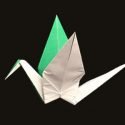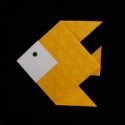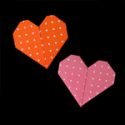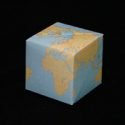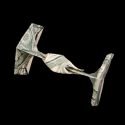Making Origami Science Experiments
by Michael LaFosse
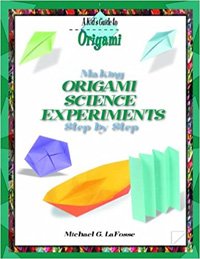
Michael LaFosse does a good job of explaining the scientific method: all science experiments start with a question or a hypothesis, experiments are designed to test the hypothesis, and then finally, analysis of the data to prove or disprove the hypothesis. Of course, this is delivered in an easy, kid-friendly, and fun way.
If you stand a piece of paper on end, it will fall over. but if you fold the paper, even once, it will stand upright by itself. Why is that? If you pleat 3 or sheets of paper and arrange them as pillars, how many books can you balance on top? What gives paper its strength and rigidity?
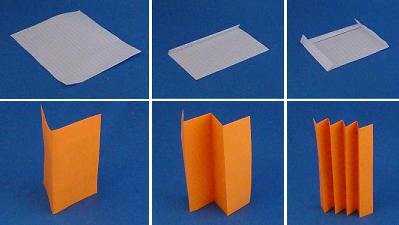
The classic dart airplane is used to ask questions about air pressure, gravity, and balance.
Dish Soap Racing Boat studies the interaction of soap and water: soap breaks the surface tension of water causing the boat-like origami model to race across the water. It’s an interesting game even if your child is too young to understand the attractive forces between water molecules.
The Water Lily Buds (pink) is used to study water absorption and expansion. LaFosse describes expansion of the model in water as “blossoming”. Further experiments are encouraged with other papers such as wax paper or aluminum foil.

A few paper boats and a pitcher filled to the brim with water can be used to measure mass. How much water is displaced from the pitcher when you place different objects into the boat? Heavier objects displace more water than light objects. The amount of water spilled can be used to measure the object’s mass.
The classic masu box is used to measure volume. How many jelly beans can fit inside? How much stuff can the box hold? What is its volume?
Summary of Making Origami Science Experiments
This book features very simple origami models, indeed, one might ask “Why bother?” Well, the strength in this book is the way it connects simple paper art with complex scientific concepts. Depending on your child’s age, you can simplify or elaborate the scientific aspects of the models. This book works well as a stand-alone volume and as a member of the 12-volume “Kid’s Guide to Origami” set.
- buy Making Origami Science Experiments here
- see review of other volumes in the “Kids Guide to Origami” series
- see other book reviews
- go to Home Page
- go to Site Map
-
Books with Easy Origami
- Easy Origami: over 30 simple projects by John Montroll
- Origami Fun Kit for Beginners by John Montroll
- My First Origami Kit by Joel Stern
- Easy Origami: A Step-by-Step Guide for Kids by C Alexander & M Meinking
- Fun With Easy Origami (Dover Origami Papercraft)
- Origami: A Step-by-Step Introduction to the Art of Paper Folding by T Cook & S Henry
- Easy Origami For Kids Book Traditional Japanese Folding Papers Overs 20 Projects by J Wish
- Easy Origami for Kids: Over 40 Simple Origami Projects by O Brooks
Please Help
Please help by reporting broken links so that we can fix them. One easy message from you can save us hours and hours of clicking. Thanks!
-
More Origami Diagrams and Instructions…
-
These free origami instructions are made available to you by the paper folding community at large. If you have a diagram you would like to share, or if your diagram is listed here and you wish to have it removed, please Contact Us. Diagrams are intended for personal use. Copyright of the models lie with the origami creators and designers. Please contact the designer and/or creator directly for non-private usage of a model and/or artwork.


